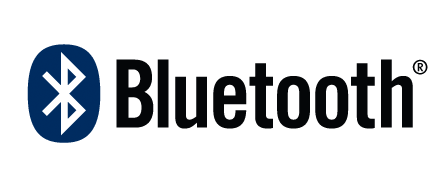Bluetooth

Bluetooth is a wireless protocol utilizing short-range communications technology facilitating data transmission over short distances from fixed and mobile devices, creating wireless personal area networks (PANs). The intent behind the development of Bluetooth was the creation of a single digital wireless protocol, capable of connecting multiple devices and overcoming issues arising from synchronization of these devices. Bluetooth provides a way to connect and exchange information between devices such as mobile phones, telephones, laptops, personal computers, printers, GPS receivers, digital cameras, and video game consoles over a secure, globally unlicensed Industrial, Scientific, and Medical (ISM) 2.4 GHz short-range radio frequency bandwidth. The Bluetooth specifications are developed and licensed by the Bluetooth Special Interest Group (SIG). The Bluetooth SIG consists of companies in the areas of telecommunication, computing, networking, and consumer electronics.
Bluetooth 1.0 and 1.0B
Versions 1.0 and 1.0B had many problems, and manufacturers had difficulty making their products interoperable. Versions 1.0 and 1.0B also included mandatory Bluetooth hardware device address (BD_ADDR) transmission in the Connecting process (rendering anonymity impossible at the protocol level), which was a major setback for certain services planned for use in Bluetooth environments.
Bluetooth 1.1
Ratified as IEEE Standard 802.15.1-2002.
Many errors found in the 1.0B specifications were fixed.
Added support for non-encrypted channels.
Received Signal Strength Indicator (RSSI).
Bluetooth 1.2
This version is backward-compatible with 1.1 and the major enhancements include the following:
Faster Connection and Discovery
- Adaptive frequency-hopping spread spectrum (AFH), which improves resistance to radio frequency interference by avoiding the use of crowded frequencies in the hopping sequence.
- Higher transmission speeds in practice, up to 721 kbit/s, as in 1.1.
- Extended Synchronous Connections (eSCO), which improve voice quality of audio links by allowing retransmissions of corrupted packets, and may optionally increase audio latency to provide better support for concurrent data transfer.
- Host Controller Interface (HCI) support for three-wire UART.
- Ratified as IEEE Standard 802.15.1-2005.
Bluetooth 2.0
This version, specified on November 10, 2004, is backward-compatible with 1.1. The main enhancement is the introduction of an Enhanced Data Rate (EDR) for both data (ACL) and voice (eSCO) packets. The nominal signalling rate of EDR is about 3 megabits per second, although the practical data transfer rate is 2.1 megabits per second.[8] This additional throughput is obtained by using a different modulation scheme for radio transmission of the data payload. Standard or Basic Rate transmission uses the Gaussian Frequency Shift Keying (GFSK) method, while EDR uses a combination of GFSK and Phase Shift Keying (PSK).[9]
According to the 2.0 specification, EDR provides the following benefits:
- Three times faster transmission speed � up to 10 times in certain cases (up to 2.1 Mbit/s).
- Lower power consumption through a reduced duty cycle.
- Simplification of multi-link scenarios due to more available bandwidth.
The Bluetooth Special Interest Group (SIG) published the specification as "Bluetooth 2.0 + EDR" which implies that EDR is an optional feature. In some cases it is not clear whether a product claiming to support "Bluetooth 2.0" actually supports the EDR higher transfer rate. At least one commercial device, the HTC TyTN pocket PC phone, states "Bluetooth 2.0 without EDR" on its data sheet.[10]
Bluetooth 2.1
Bluetooth Core Specification Version 2.1 is fully backward-compatible with 1.1, and was adopted by the Bluetooth SIG on July 26, 2007.[9] This specification includes the following features:
Extended inquiry response: provides more information during the inquiry procedure to allow better filtering of devices before connection. This information includes the name of the device, a list of services the device supports, as well as other information like the time of day, and pairing information.
Sniff subrating: reduces the power consumption when devices are in the sniff low-power mode, especially on links with asymmetric data flows. Human interface devices (HID) are expected to benefit the most, with mouse and keyboard devices increasing the battery life by a factor of 3 to 10. It lets devices decide how long they will wait before sending keepalive messages to one another. Previous Bluetooth implementations featured keep alive message frequencies of up to several times per second. In contrast, the 2.1 specification allows pairs of devices to negotiate this value between them to as infrequently as once every 5 or 10 seconds.
Encryption Pause Resume: enables an encryption key to be refreshed, enabling much stronger encryption for connections that stay up for longer than 23.3 hours (one Bluetooth day).
Secure Simple Pairing: radically improves the pairing experience for Bluetooth devices, while increasing the use and strength of security. It is expected that this feature will significantly increase the use of Bluetooth.[11]
Near Field Communication (NFC) cooperation: automatic creation of secure Bluetooth connections when NFC radio interface is also available. For example, a headset should be paired with a Bluetooth 2.1 phone including NFC just by bringing the two devices close to each other (a few centimeters). Another example is automatic uploading of photos from a mobile phone or camera to a digital picture frame just by bringing the phone or camera close to the frame.[12][13]
Bluetooth 3.0
The next version of Bluetooth after v2.1, code-named Seattle (the version number of which is TBD) has many of the same features, but is most notable for plans to adopt ultra-wideband (UWB) radio technology. This will allow Bluetooth use over UWB radio, enabling very fast data transfers of up to 480 Mbit/s, while building on the very low-power idle modes of Bluetooth.
|

